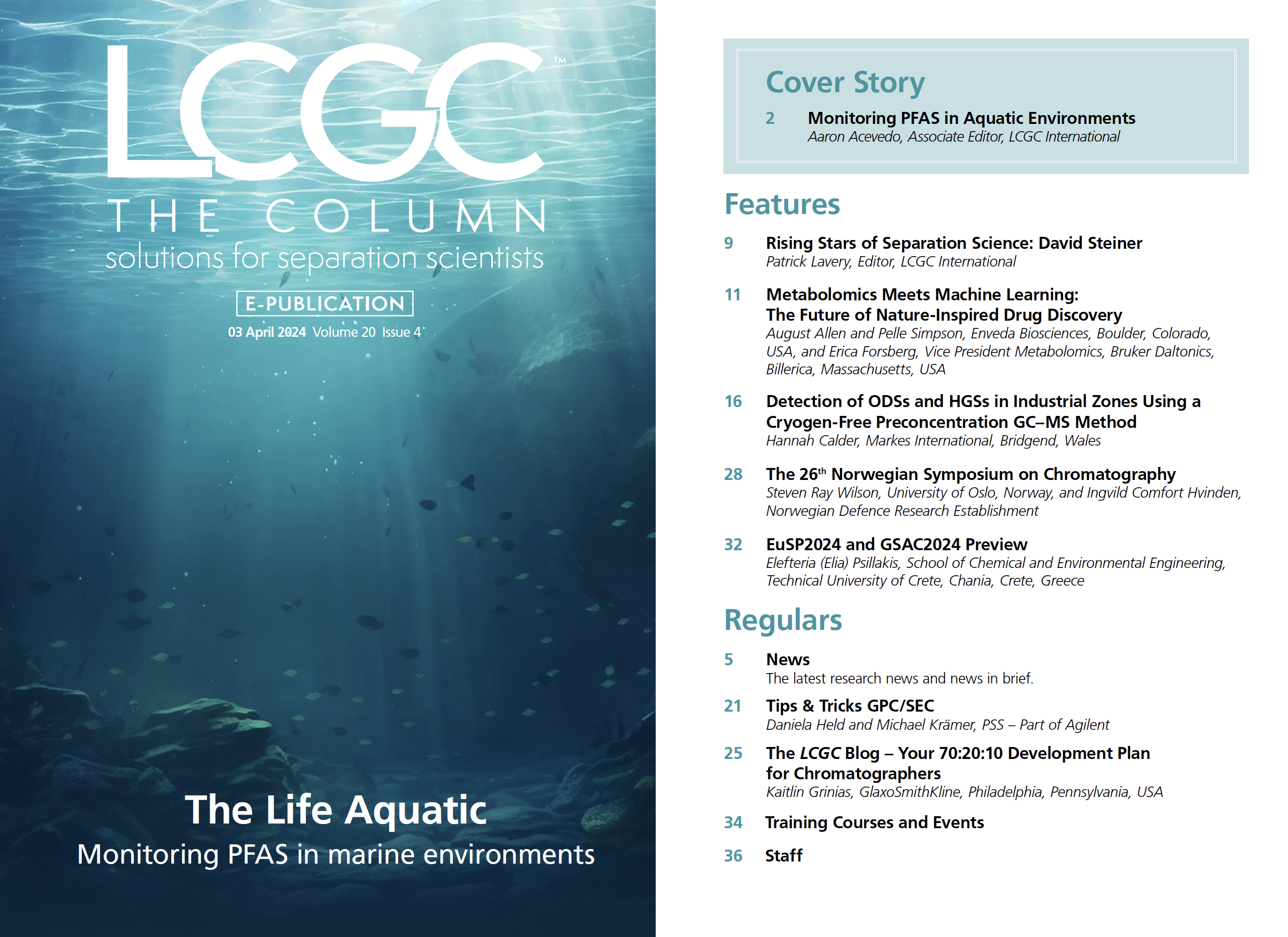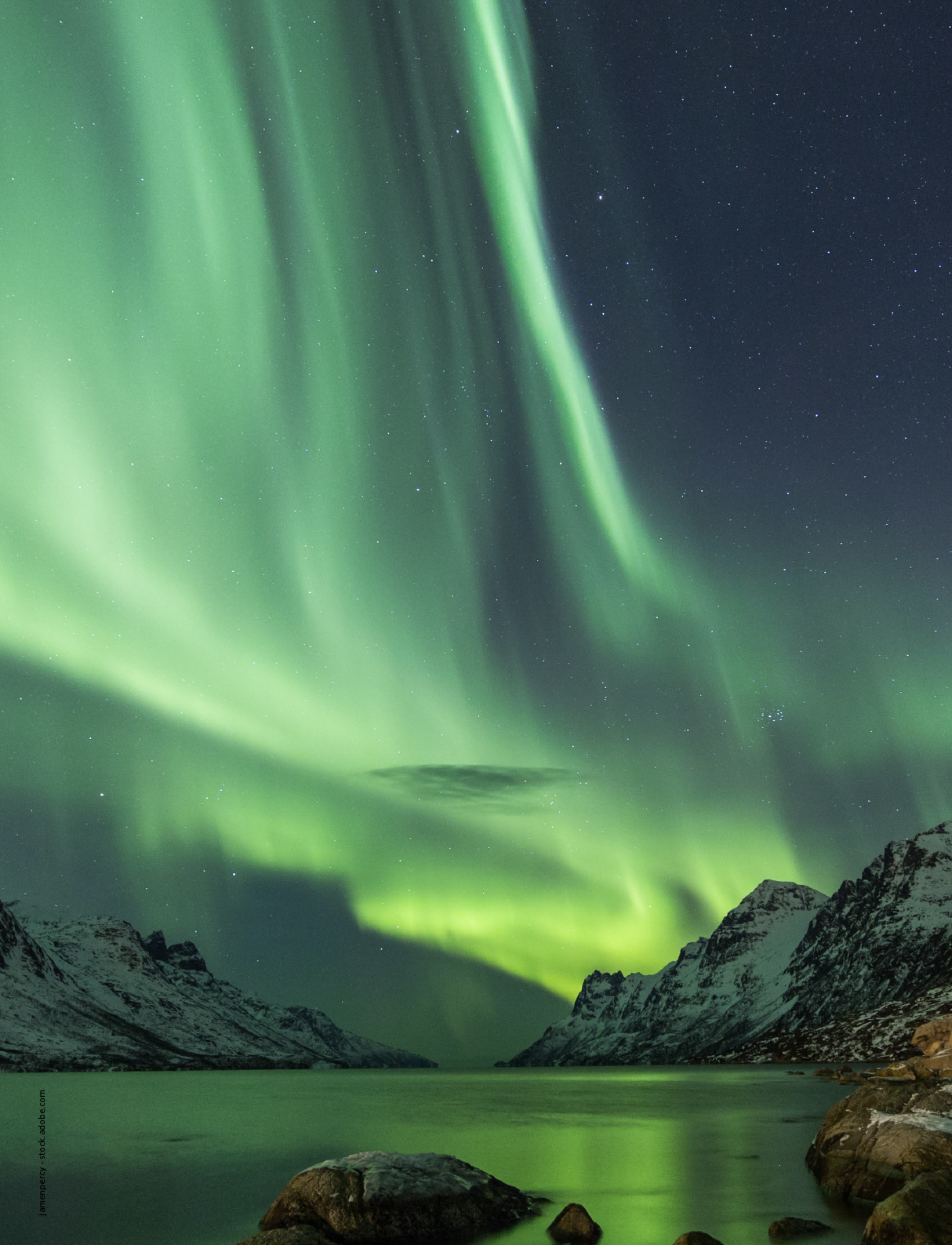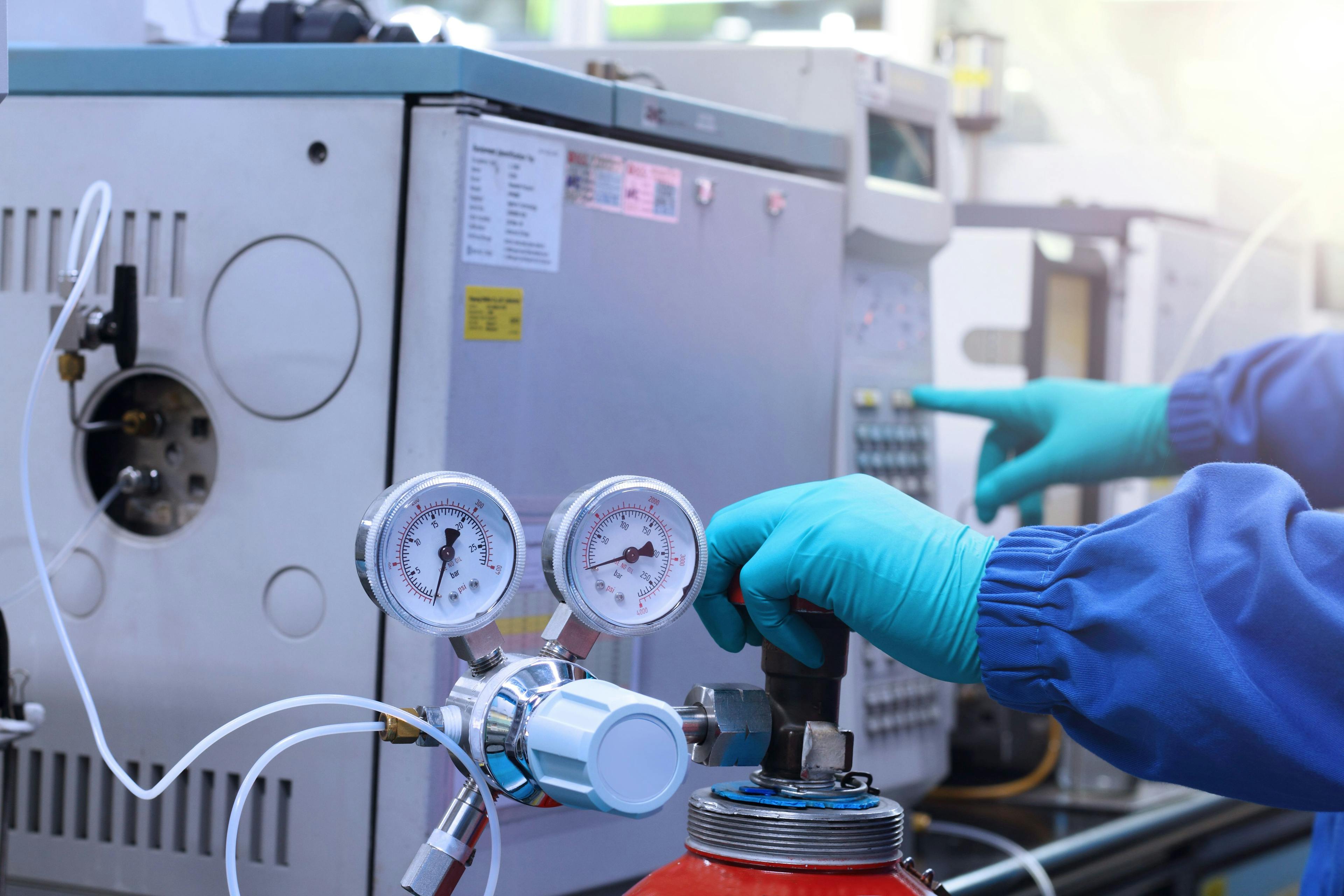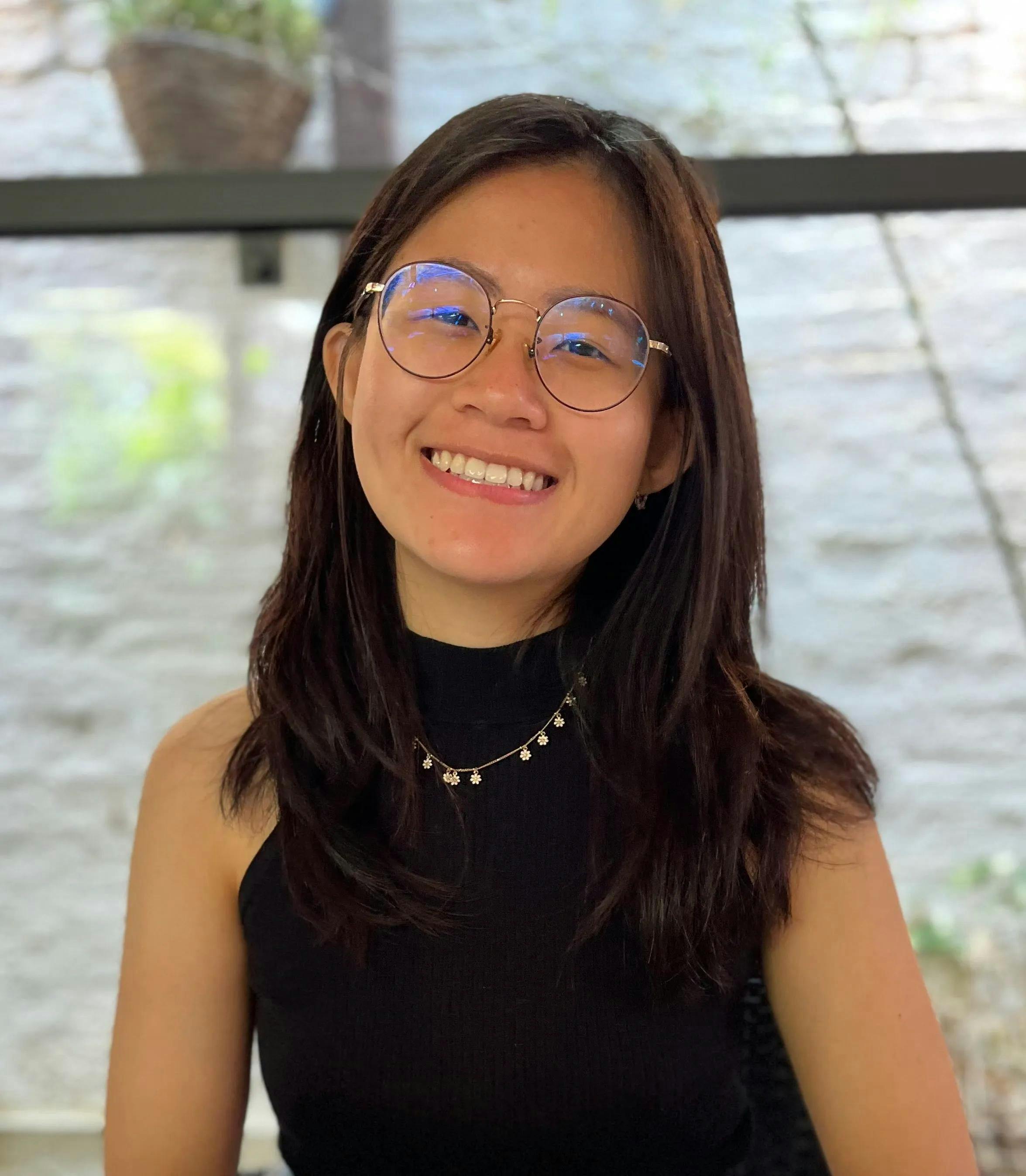GC–MS Analysis of PFAS Expands Knowledge of Toxicokinetic Data
A study published in the journal Toxics proposed targeted methods, developed using gas chromatography coupled to tandem mass spectrometry (GC–MS/MS), to measure human plasma protein binding and hepatocyte clearance in 73 per- and polyfluoroalkyl substances (PFAS) (1). The in vitro toxicokinetic (TK) information sought by the seven authors, most of whom are affiliated with the U.S. Environmental Protection Agency (EPA), may close gaps in TK or toxicologic knowledge that could signal the environmental fates of some of these PFAS regarding their metabolism, volatility, or other modes of transport.
According to the Centers for Disease Control and Prevention (CDC), PFAS are used to make fluoropolymer coatings that can be found in products ranging from clothing to adhesives to food packaging to electrical wire insulation (2). These chemicals bioaccumulate in fish, wildlife, and water and therefore, in the humans who consume these contaminated sources. The Paris-based Organisation for Economic Co-Operation and Development (OECD) classifies PFAS as having at least one fully fluorinated methyl or methylene carbon atom; the OECD has established a list of 4730 known such substances, though specific information is available for all but a relative few (1,2).
Methods in this study were borne out of the EPA’s PFAS Strategic Roadmap, an outline for how to use in vitro toxicity testing and TK studies to broaden knowledge of PFAS bioactivity (1). Of 73 PFAS this team identified as amenable to GC–MS/MS in multiple functional groups, targeted analysis methods were developed for 61 (also using traditional gas chromatography–mass spectrometry, GC–MS) with either positive or negative chemical ionization (PCI or NCI respectively). The authors said biotic stability, also measured in vitro, gave clues about the potential of PFAS for hydrolysis in aqueous environments.
Addressing the testing of human plasma protein binding, the study confirmed that PFAS are generally high binders (1). However, no trends were observed specific to any one of 21 functional categories which were evaluated. The authors found it likely that some PFAS would metabolize to other, more stable PFAS, with PFAS sulfonamides just one such instance of “precursor products” (1).
References
(1) Kreutz, A.; Clifton, M. S.; Henderson, W. M.; Smeltz, M. G.; Phillips, M.; Wambaugh, J. F.; Wetmore, B. A. Category-Based Toxicokinetic Evaluations of Data-Poor Per- and Polyfluoroalkyl Substances (PFAS) Using Gas Chromatography Coupled with Mass Spectrometry. Toxics 2023, 11 (5), 463. DOI: 10.3390/toxics11050463
(2) Per- and Polyfluorinated Substances (PFAS) Factsheet. Centers for Disease Control and Prevention – National Biomonitoring Program. U.S. Department of Health & Human Services, 2022. https://www.cdc.gov/biomonitoring/PFAS_FactSheet.html#:~:text=Print-,Per%2D%20 and%20Polyfluorinated%20Substances%20(PFAS),stains%2C%20grease%2C%20and%20 water. (accessed 2024-03-25).

University of Rouen-Normandy Scientists Explore Eco-Friendly Sampling Approach for GC-HRMS
April 17th 2025Root exudates—substances secreted by living plant roots—are challenging to sample, as they are typically extracted using artificial devices and can vary widely in both quantity and composition across plant species.
Sorbonne Researchers Develop Miniaturized GC Detector for VOC Analysis
April 16th 2025A team of scientists from the Paris university developed and optimized MAVERIC, a miniaturized and autonomous gas chromatography (GC) system coupled to a nano-gravimetric detector (NGD) based on a NEMS (nano-electromechanical-system) resonator.
Miniaturized GC–MS Method for BVOC Analysis of Spanish Trees
April 16th 2025University of Valladolid scientists used a miniaturized method for analyzing biogenic volatile organic compounds (BVOCs) emitted by tree species, using headspace solid-phase microextraction coupled with gas chromatography and quadrupole time-of-flight mass spectrometry (HS-SPME-GC–QTOF-MS) has been developed.


















